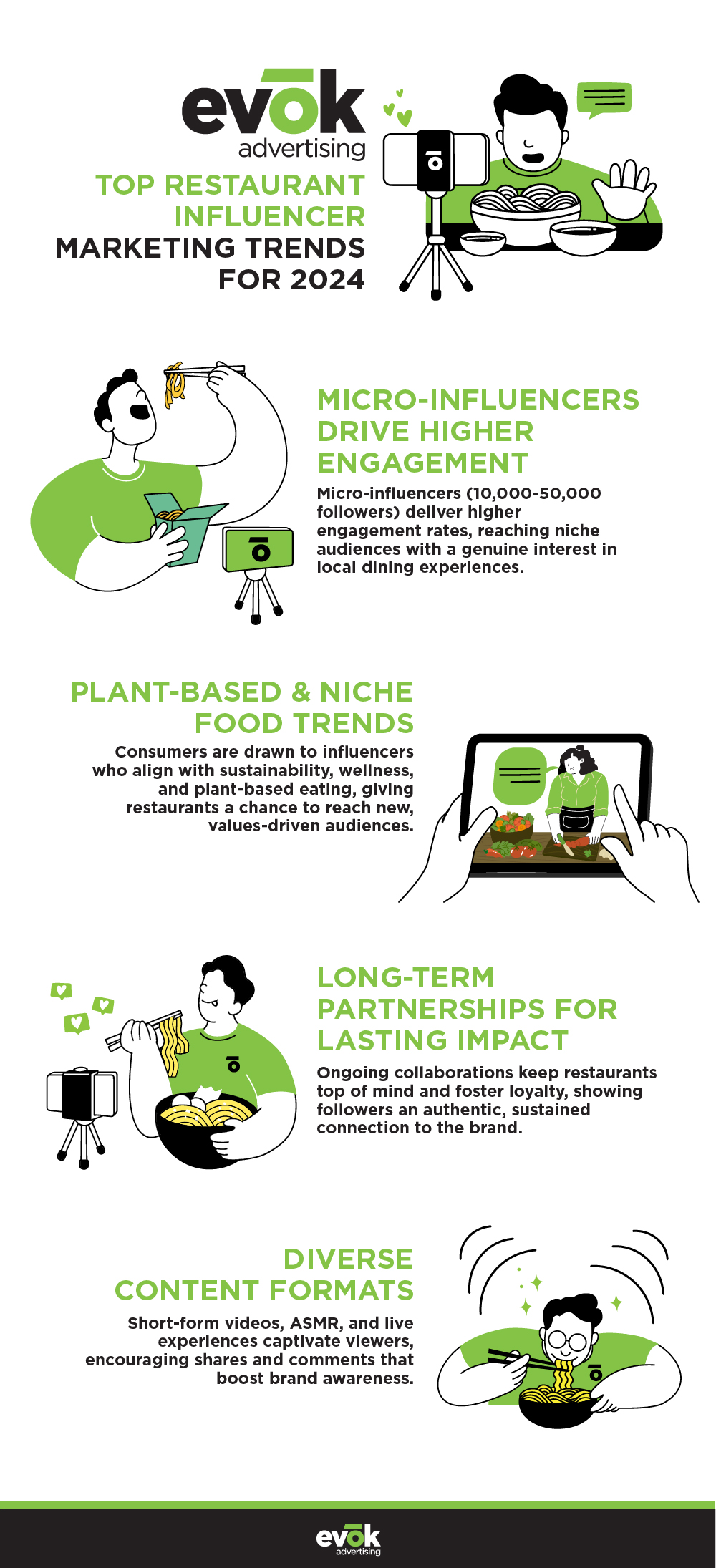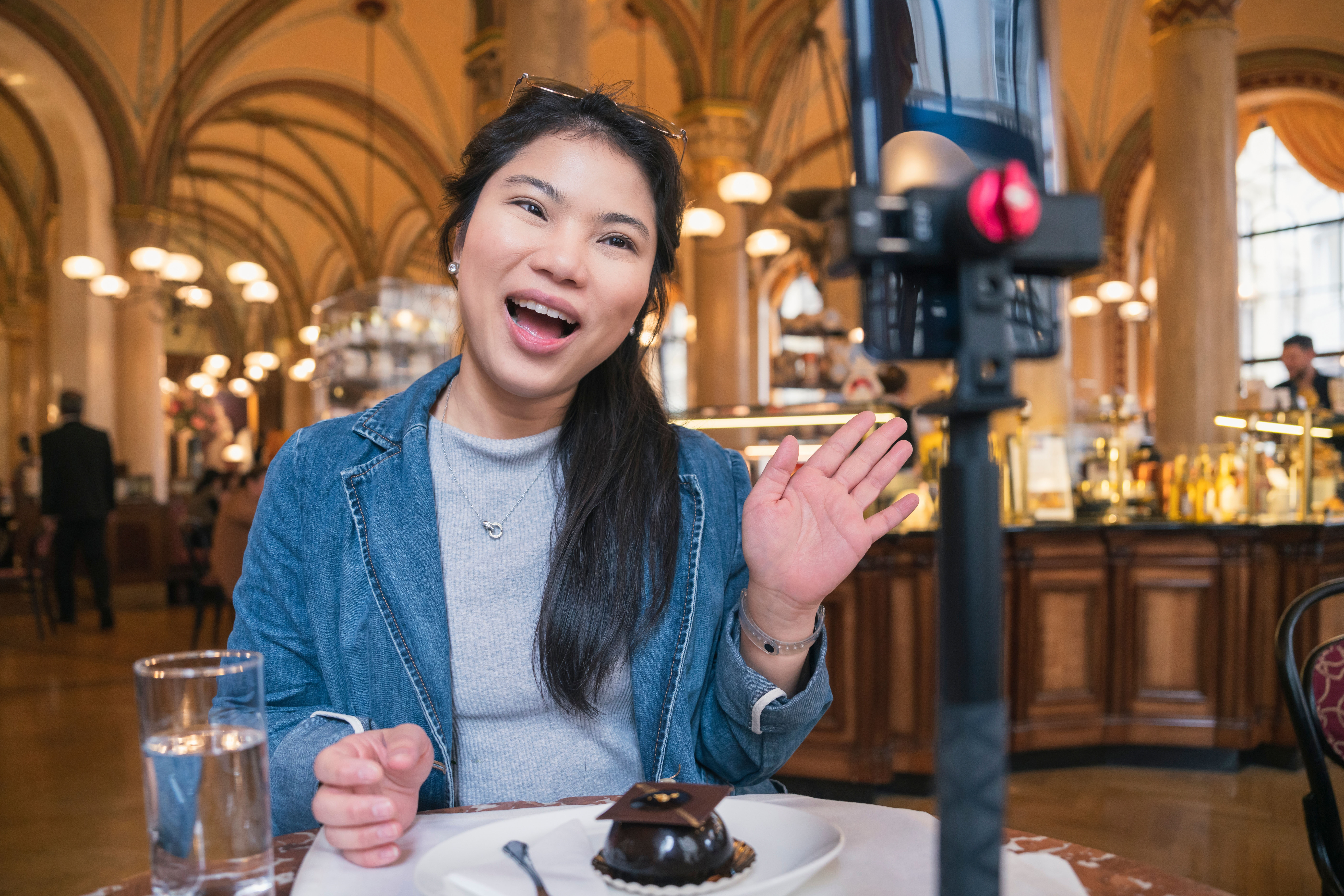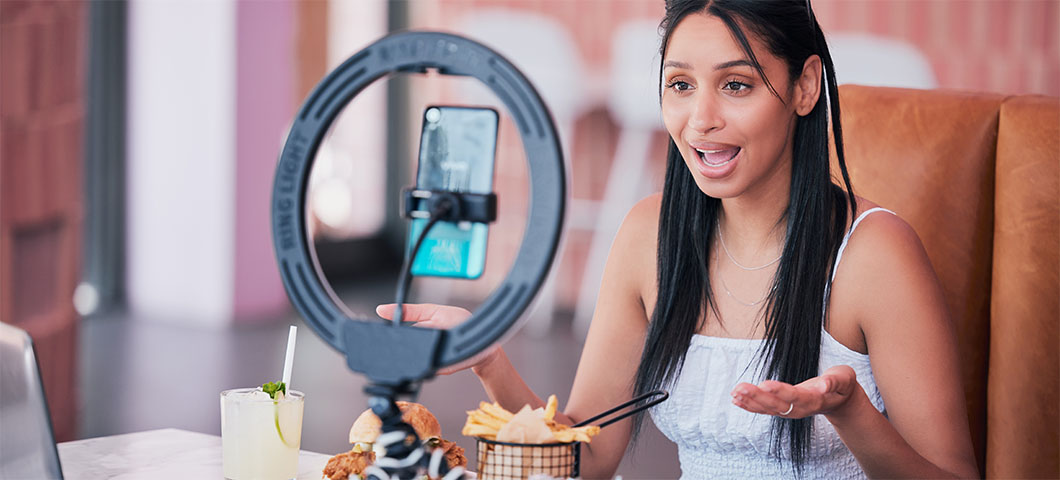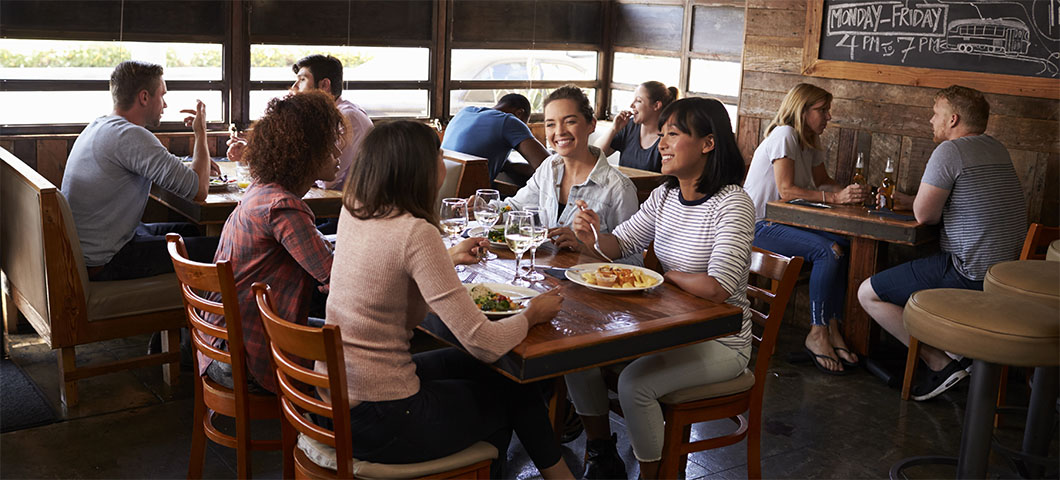
Restaurant Influencer Marketing in 2024: A Strategy Guide on Trends, Costs, and ROI
Food and beverage content dominates social media, unprecedentedly capturing consumer interest. In 2023 alone, creators generated over 1.2 million posts about food and beverage brands, resulting in a staggering 75 billion impressions and 3 billion consumer interactions. This creates a unique opportunity: tapping into the voices that resonate most with your target audience to drive engagement, loyalty, and sales. However, the strategies and best practices are evolving.
Today’s CMOs must go beyond basic partnerships to leverage trends like micro-influencers, plant-based niches, and long-term collaborations to maximize engagement and ROI. This Restaurant Marketing guide explores the key trends, costs, and metrics that can define successful restaurant influencer strategies.

Why Influencer Marketing Works for Restaurants
Influencer marketing creates authentic social proof that resonates particularly well in the restaurant industry, where dining decisions are heavily influenced by peer recommendations. Unlike traditional advertising, influencer content captures the full sensory experience of dining, from the ambiance and presentation to the genuine reactions of real people enjoying the food. This authenticity is especially powerful for restaurants, as most consumers trust recommendations from individuals over branded content, even when they know it’s sponsored.
The Power of Food Content
Food content has an undeniable appeal on social media, consistently drawing high levels of engagement. From beautifully plated meals to mouth-watering recipe videos, food images, and videos captivate audiences and foster strong connections. With consumers frequently seeking dining inspiration on platforms like Instagram and TikTok, restaurant brands have a natural advantage in using visually compelling influencer content to engage new customers. Research confirms this power: Over 52% of consumers will likely act on influencer content about food and beverages. This high level of engagement signals a valuable opportunity for restaurants to reach potential customers by partnering with influencers whose followers are already invested in food experiences.
Consumer Trust and Credibility
Influencer marketing is highly effective in building trust with audiences. Unlike traditional advertising, influencer recommendations feel personal and credible, making it easier for consumers to connect with brands on a deeper level. This credibility leads to impressive returns on investment: restaurants can expect to earn an average of $6.50 for every $1 spent on influencer marketing. The trust built by influencers goes beyond a one-time interaction; it fosters loyalty and encourages word-of-mouth marketing, helping brands acquire and retain new customers. For restaurants looking to strengthen their brand image and reach a wider audience, influencer partnerships offer a direct path to build credibility in diners’ eyes.
Relevance of Local and Micro-Influencers
Local and micro-influencers are especially powerful allies for restaurant marketing. Micro-influencers generate up to 60% more engagement than macro-influencers. These influencers have smaller but highly engaged followings and specialize in niche content that aligns closely with their audience’s interests. This means restaurants can reach target audiences more likely to be genuinely interested in their offerings, with micro-influencers often producing higher engagement rates than larger influencers. Working with local influencers can also drive foot traffic by attracting nearby followers who can easily visit in person. Additionally, local influencers often know the ins and outs of the community. They can highlight unique aspects of a restaurant that resonate with local patrons, adding authenticity that boosts brand loyalty.
Key Trends in Restaurant Influencer Marketing for 2024

High Engagement Rates via Micro-Influencers
One of the biggest shifts in influencer marketing is the growing importance of micro-influencers, especially in the restaurant industry. Micro-influencers with follower counts between 10,000 and 50,000 often have higher engagement rates than larger influencers. Their audience tends to be more niche and highly engaged, resulting in deeply resonating content. For restaurants, this can mean more meaningful interactions and higher ROI. Rather than casting a wide net, micro-influencers allow brands to connect directly with diners who are genuinely interested in local dining experiences, increasing online engagement and foot traffic.
Rise of Plant-Based and Niche Food Trends
As plant-based and sustainable dining options continue gaining popularity, influencers specializing in these trends are attracting highly engaged audiences. Many consumers today are motivated by values like environmental sustainability and wellness and seek out restaurants that align with these interests. Partnering with influencers who advocate for plant-based diets or other niche food movements can help restaurants tap into these passionate communities, expanding their reach to new customer bases. These influencers offer content that drives engagement and boosts brand awareness by aligning with audience values, making it easier to establish meaningful connections.
Long-Term Partnerships Over One-Off Campaigns
In 2024, restaurants increasingly opt for long-term partnerships with influencers, moving away from one-off campaigns that may lack depth. Long-term collaborations provide continuity, allowing influencers to share multiple dining experiences over time, building authenticity and keeping the restaurant in mind with followers. This approach also strengthens brand loyalty as audiences become familiar with the restaurant through repeated endorsements. By investing in ongoing partnerships, restaurants can foster audience relationships, ultimately driving consistent engagement and sales.
Diverse Content Formats
With the rise of short-form video and other interactive formats, audiences prefer more immersive content experiences. Restaurants can benefit by partnering with influencers who create engaging formats like behind-the-scenes tours, live cooking sessions, or ASMR-style content. These formats create memorable experiences for viewers, encouraging them to share and engage with the content. By offering a variety of content types, restaurants can reach a broader demographic and appeal to diverse consumer preferences, ultimately driving online presence and brand awareness across multiple social media platforms.
Budgeting and Costs in 2024

Understanding the financial landscape of influencer marketing is crucial for restaurants looking to maximize their marketing budget while achieving meaningful results. As we navigate 2024, the investment required for influencer partnerships varies significantly based on factors like audience size, engagement rates, and campaign complexity. This section breaks down the key cost considerations, value propositions, and measurement tools that restaurants need to consider when allocating their influencer marketing budget. Whether you’re a small local establishment or a multi-location brand, these insights will help you make informed decisions about your influencer marketing investments.
Cost Considerations
As influencer marketing continues to evolve, so do the costs associated with campaigns. In 2024, CMOs should expect to invest based on the influence and engagement they aim to achieve. Influencers with larger followings will naturally come at a premium, but micro and local influencers can provide high engagement at a fraction of the cost. Depending on campaign goals, partnerships with micro-influencers and local personalities may offer the best value for restaurants looking to reach niche audiences without overextending their budget.
Value vs. Cost for Local Influencers
Local influencers are often a cost-effective solution for restaurants, particularly for promoting neighborhood dining experiences. Because they appeal to audiences within a specific area, local influencers can help drive foot traffic by targeting followers who are likely to visit in person. Compared to national influencers, who often command higher fees, local influencers deliver targeted reach and authentic engagement, yielding a strong ROI that aligns with a restaurant’s goals for attracting nearby patrons.
Tools to Measure Success
Tracking the impact of influencer campaigns is essential to understanding ROI. Key metrics like engagement rates, reach, and sales conversions are invaluable in measuring success. Tools like Google Analytics, Hootsuite, and Sprout Social can help track performance metrics and evaluate how influencer content affects online presence, website visits, and sales. Tracking promo codes, unique URLs, and online orders linked to influencer campaigns can help quantify the direct impact on revenue, enabling CMOs to assess their ROI with precision.
Maximizing ROI and Measuring Success
In today’s data-driven marketing landscape, the success of influencer campaigns hinges on more than just likes and followers. It’s about driving measurable business outcomes that impact your restaurant’s bottom line. Understanding how to track, measure, and optimize your influencer marketing efforts is essential for demonstrating a clear return on investment and making informed decisions about future campaigns. This section explores the critical metrics that matter most for restaurants and provides strategic insights on creating content that not only engages audiences but converts them into paying customers.
Defining Success Metrics
For restaurant CMOs, defining success in influencer marketing means going beyond surface-level metrics. Key performance indicators (KPIs) should include engagement rates, brand mentions, and a measurable increase in foot traffic and online orders attributed to influencer partnerships. Tracking metrics like reach, comments, shares, and click-through rates can help gauge the content’s effectiveness in reaching target audiences. Additionally, understanding the impact on brand awareness and loyalty can provide a fuller picture of campaign success.
Creating Content that Drives Engagement and Sales
Influencer campaigns should be tailored to create engagement and drive sales. Encourage influencers to produce high-quality, authentic content that showcases the unique aspects of the restaurant, whether it’s a plant-based menu, locally sourced ingredients, or a distinctive ambiance. Content that includes promo codes, links to reservation systems, or online ordering can drive immediate sales and make it easier for CMOs to attribute revenue directly to the influencer campaign. Authentic, relatable content that aligns with customer interests is key to driving both engagement and conversions.
Elevate Your Restaurant’s Influence in 2024

We specialize in influencer strategies tailored to drive real results for restaurants. By aligning with influencers who genuinely connect with your brand, we help increase engagement, attract new diners, and boost loyalty. Whether your goal is to build awareness, drive foot traffic, or enhance online orders, evok can craft a campaign that delivers measurable impact. Ready to take your restaurant’s social strategy to the next level? Contact us to explore how we can make influencer marketing work for you.